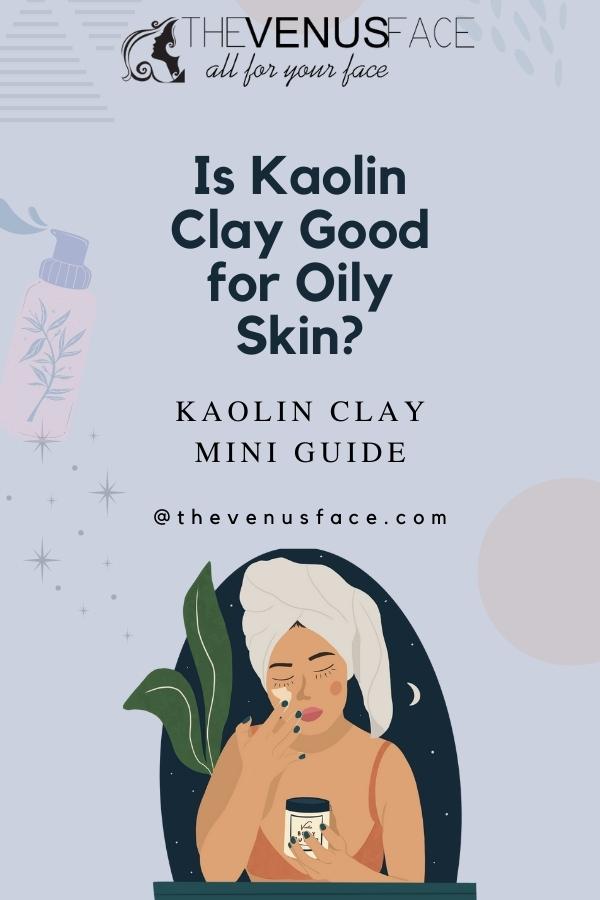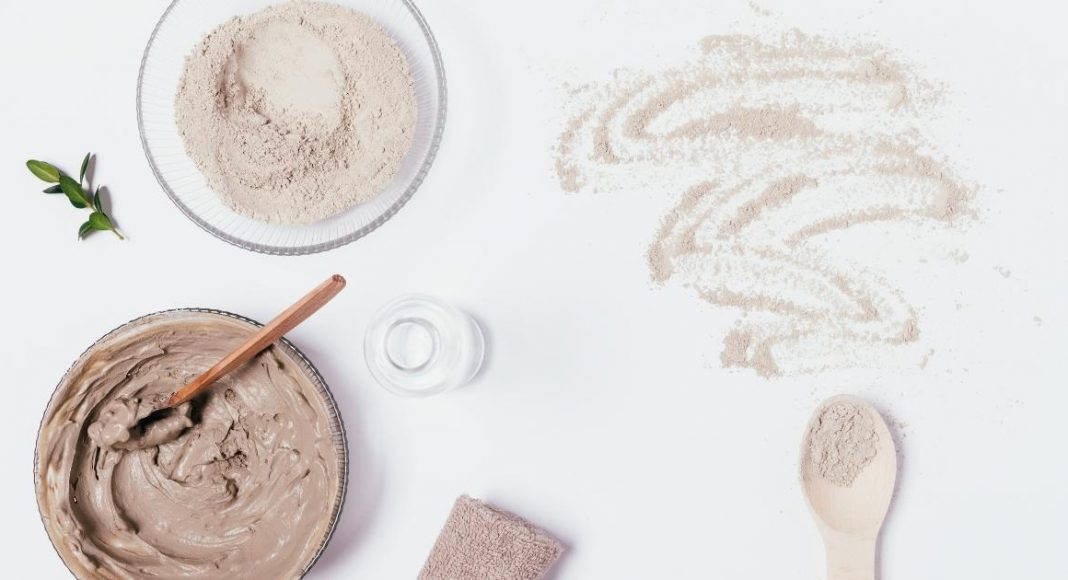Is Kaolin clay good for oily skin? We will learn more in this post.
Oily skin is a common problem that can arise for a number of different reasons. The most common cause is hormonal changes, particularly during adolescence. A hormone imbalance can result in overactive sebaceous glands, which create an excess amount of oil on the surface of the skin. In addition, exposure to environmental toxins and pollutants can also trigger an oily complexion, as these chemicals tend to irritate the skin and trigger excess oil production. As anyone with oily skin will know, it can have serious consequences for one’s appearance and self-esteem. Skin that constantly looks shiny or greasy makes people seem unkempt and “dirty,” even if they are not. And deeper problems such as acne and blackheads often occur as the result of oily complexions, creating frustrating and persistent blemishes that can be difficult to get rid of. However, there are many effective treatments available to help control oily skin and its symptoms. In this blog post, we will learn about Kaolin clay.

As an Amazon Associate, I earn from qualifying purchases.
Does Kaolin clay help oily skin?
Yes, it does. Kaolin clay is a natural ingredient that has been shown to help reduce excess skin oil and unclog pores. It absorbs extra sebum from the surface of the skin, which helps stop oily shine and also clears up acne blemishes. Moreover, kaolin clay also has gentle exfoliating properties, which help get rid of dead skin cells and other impurities that can cause blackheads and breakouts. For these reasons, kaolin clay is often used in natural skincare products designed for oily and acne-prone skin.
Kaolin clay benefits for the skin
There are many benefits of this clay for the skin in general:
Absorb excess oil
This natural ingredient works by absorbing excess sebum on the skin, leaving your skin feeling clean and refreshed. Not only is kaolin clay incredibly effective at addressing oiliness and acne, but it is also completely safe to use. Unlike harsh chemical-based treatments that can cause irritation or dryness, this gentle clay can be used regularly without worry.
Treat acne
Acne is a common skin condition that affects people of all ages. While there are many over-the-counter treatments available, these can often be ineffective or cause unwanted side effects. Kaolin clay is a natural alternative that has been shown to be effective in treating acne. This clay works by absorbing excess oil and removing dead skin cells, two factors that can contribute to the development of acne. Kaolin clay is gentle and non-irritating, making it a good choice for people with sensitive skin. In addition, it can be used on all skin types and is available in both powder and liquid form.
Gentle exfoliation
This clay is a popular ingredient in many facial and body care products, thanks to its ability to exfoliate the skin effectively. At a microscopic level, kaolin clay has unique properties that allow it to gently slough off dead skin cells and leave the surface of the skin looking bright and refreshed. In addition, kaolin clay also contains natural antioxidants that work to neutralize harmful free radicals and prevent damage to healthy cells. For these reasons, kaolin clay is a go-to ingredient for both professional dermatologists and home beauty enthusiasts alike.
More: 9 methods to heal over-exfoliated skin.
Reduce inflammation
When applied to the skin, Kaolin clay can help to reduce inflammation and soothe irritation. This makes it an ideal treatment for conditions such as eczema and psoriasis. Kaolin clay works by absorbing excess oils and impurities from the skin. This helps to cleanse the pores and minimize redness. In addition, Kaolin clay contains minerals that can help to calm and protect the skin. When used regularly, Kaolin clay can help to reduce the frequency and severity of flare-ups, giving you relief from painful and embarrassing skin conditions.
Treat uneven skin tone
Uneven skin tone is a common issue that many people deal with. While there are a number of potential causes, sun exposure is often to blame. Fortunately, kaolin clay can be used to help treat this issue. When applied to the skin, it can help to even out the skin tone and give the skin a healthier appearance.
How to use Kaolin clay for oily skin
There are many ways to use this clay to treat oily skin. Some popular options include:
Kaolin clay mask recipe with lavender oil and aloe vera gel
Ingredient:
- White kaolin clay (see recommended brand)
- Lavender essential oil (see recommended brand)
- Aloe vera gel (see recommended brand)
How to make:
- First, add 2 teaspoons of Kaolin clay to a bowl
- Next, add 2 drops of lavender oil
- Then, add 1 teaspoon of aloe vera gel
- After that, add 1 teaspoon of water
- Finally, stir the mixture well to form a paste
How to use: use your finger to apply the paste to your face in a circular motion. Avoid the eye area. Leave the mask on for 10-15 minutes, then rinse with warm water.
Pure Kaolin clay mask
This recipe is easier. Simply pour ½ teaspoon of Kaolin clay into a bowl, add a small amount of water to form a paste, and apply the mask to your face. Leave the mask on for 15-20 minutes, then rinse with warm water.
Final thought
Kaolin clay is a natural ingredient that has many benefits for the skin. It can be used to treat acne, uneven skin tone, inflammation, and more. You can use it in masks or as part of your regular skincare routine. Is Kaolin clay good for oily skin? Yes! Whether you are looking for a natural alternative to commercial products or just want to try something new, this clay is definitely worth checking out!


